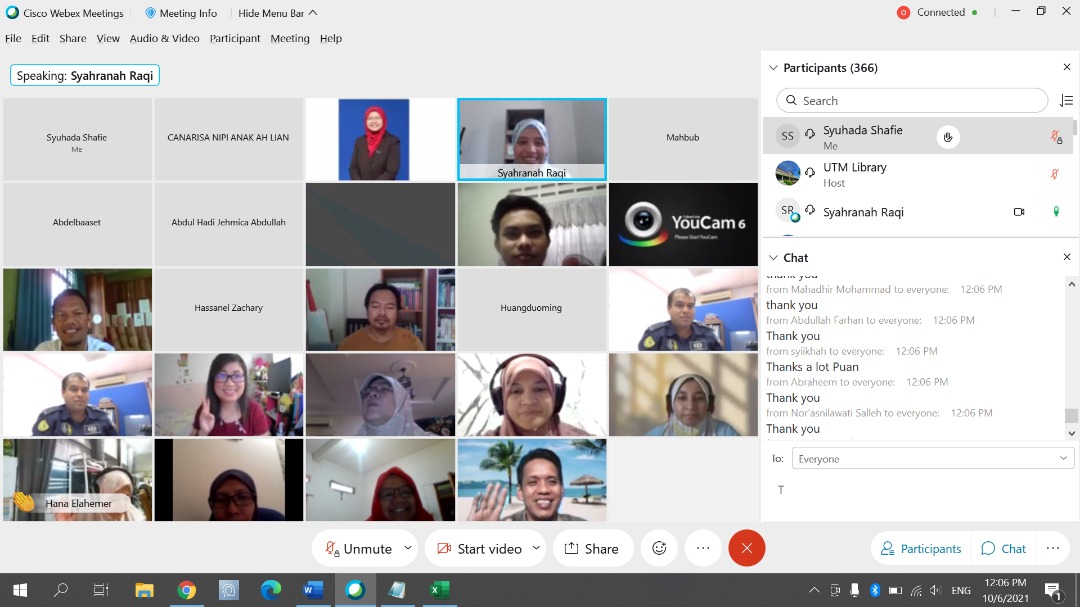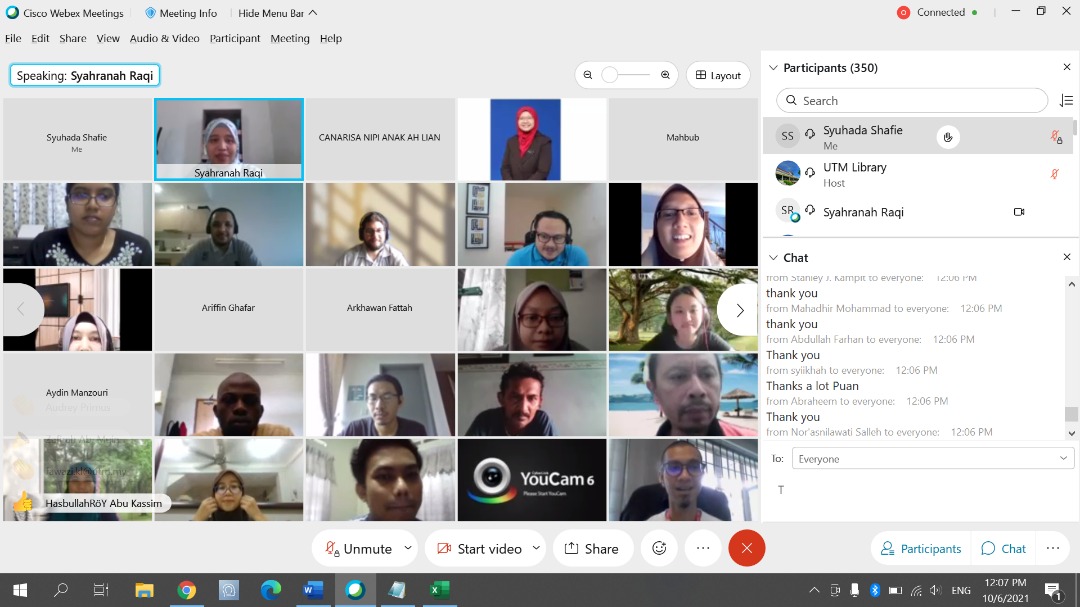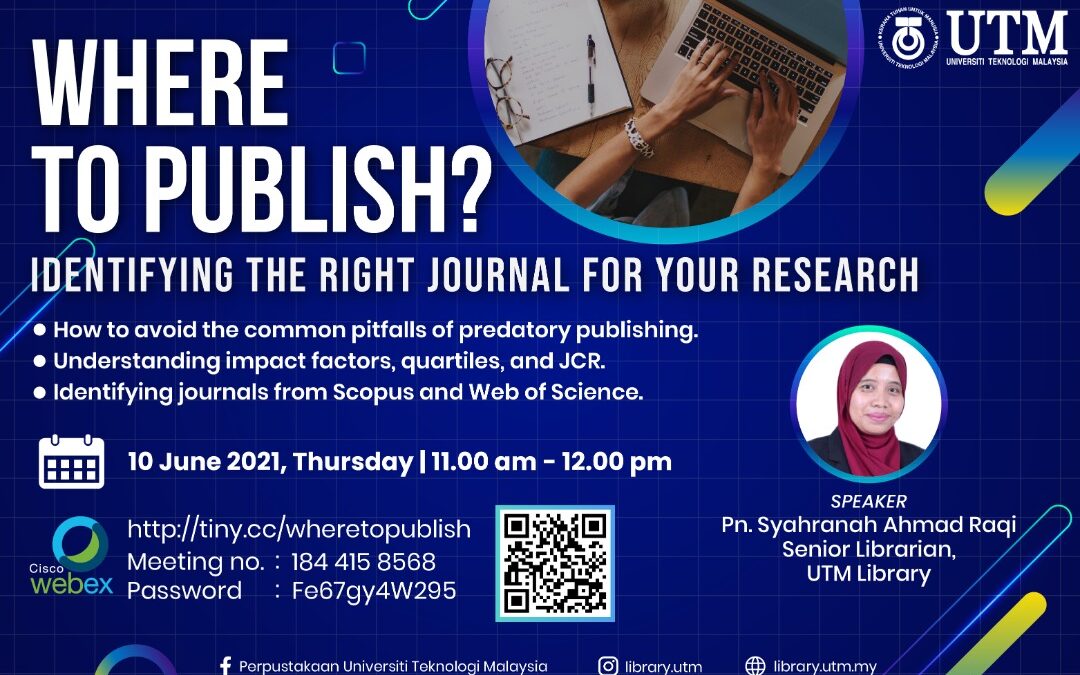Over 400 attendees took part in a webinar on 10 June 2021, entitled “Where to Publish? Identifying the Right Journal for Your Research” organized by UTM Library. The webinar started at 11.00 am was open to all UTM staff and students.
The webinar was presented by Mrs. Syahranah A. Raqi, Senior Librarian from Information Services and Research Section, UTM Library. The webinar focused on three areas:
1. Identifying indexed publication in UTM context
2. Searching for Web of Science Core Collection (WOS) or Scopus indexed journals
3. Avoiding the common pitfalls of predatory publishing
Many attendees sent in their questions and challenges when it comes to identifying indexed publication and there were some common themes, which was addressed during the one-hour session.

Identifying Indexed Publication
The webinar started off with the definition of indexed publication within UTM context. In line with Malaysia Research Assessment (MyRA), indexed publication refers to journal articles, conference proceedings or book chapters indexed in either Web of Science, Scopus or ERA.
Searching for Web of Science/Scopus Indexed Journals
When verifying the status of a journal, participants were shown how to search from WOS or Scopus using journal title, ISSN or subject area. Detailed explanation was given on Journal Impact Factor™ (JIF), quartile and the various indexes in WOS which were exclusive to Clarivate Analytics. The speaker also shown the importance of using WOS or Scopus instead of relying solely on Google for journal details when deciding on which journal to submit their manuscripts to.
Avoiding the Common Pitfalls of Predatory Publishing
Predatory publishing refers to publications (journals or conferences) suspected of abusing paid open access to extort fees from authors, editorial practices. They usually advertised misleading information and claims such as journals being indexed by Scopus/WOS or at times, using fake metrics.

Mrs. Syahranah shared with the participants the following tips on recognizing and avoiding predatory journals :
1. Check if the journal titles are indexed in either Web of Science, Scopus, ERA or MyCite.
2. Check the journal’s website thoroughly and compare the journal details from the website with Web of
Science/Scopus/ERA or MyCite.
As an initiative, UTM Library has created a Google form to help participant verify the status of a journal at bit.ly/checkjournal.
Via the webinar, the attendees had the opportunity to understand the updates and current issues in research publication. The webinar wrapped up with the Q&A session and ended at 12.15 pm in the afternoon.


